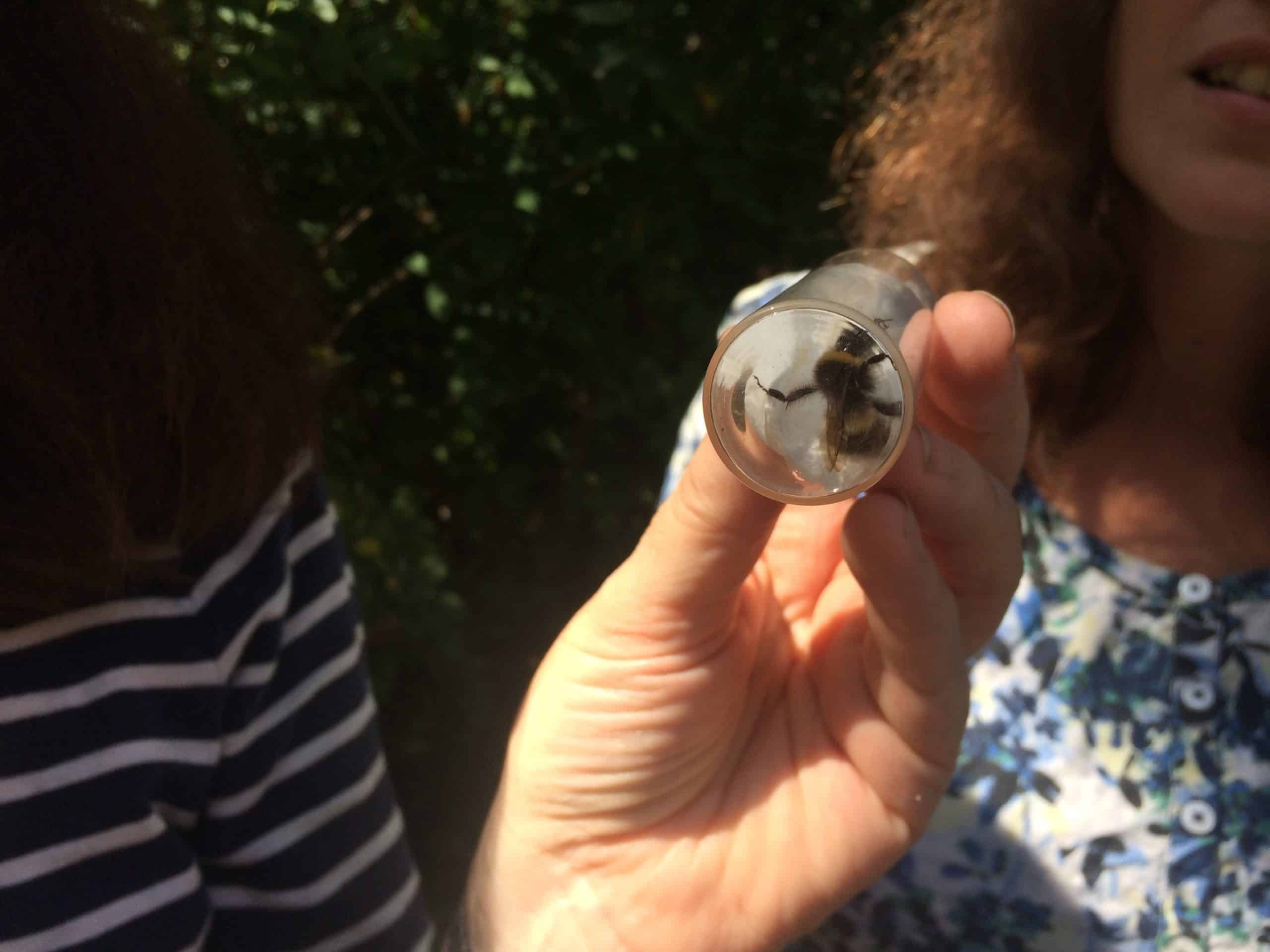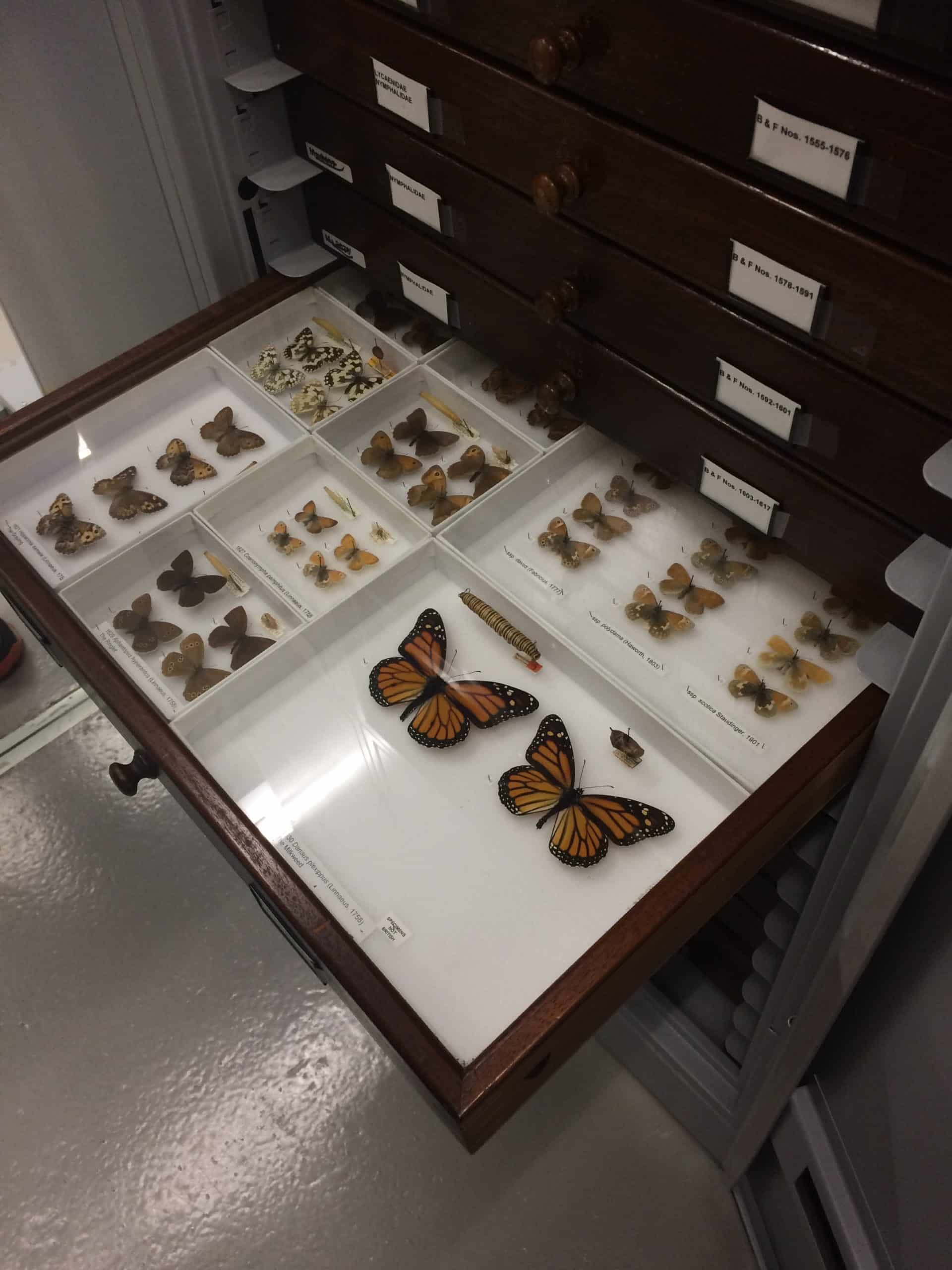Julie Cox, GiGL Partnership Officer

The GiGL team has a wealth of different expertise. Whilst we don’t generally use our species identification skills on a daily basis, it’s important we have an affinity for the ID requirements essential to accurately record different taxa. We’re incredibly lucky to have Claudia Watts as our GiGL Royal Parks Officer who, as well as providing excellent management for the species and habitat data for the Royal Parks land holdings, is a highly regarded entomologist. This summer Claudia kindly agreed to impart some of her knowledge of bees to the GiGL team.
We were hosted for the day by the Angela Marmont Centre for UK Biodiversity in the Natural History Museum. As an added bonus we were given a tour around their synoptic reference collections. This is a fantastic resource, available for use by the public, to support their personal research, wildlife identification or other interests including to inspire art as well as science. We were led into a climate-controlled room and shown a selection of the many thousands of specimens stored in their UK collection. This included Lepidoptera (butterflies and moths) and Coleoptera (beetles), as well different groups of Apoidea (bees). Many thanks to Florin Feneru, the centre’s Identification and Advisory Officer, for showing us around.

Lepidoptera at Angela Marmont Centre for Biodiversity
The UK has more than 250 species of bee. You might think identifying a bumblebee is pretty easy, but there are even 24 species of those.
We started by learning about bee types and their characteristics. Contrary to expectations, most bees are solitary – for example leaf-cutter bees, red mason bees and tawny mining bees. Some are aerial nesters, so will appreciate garden enhancements like bee hotels, whilst others will form nests in things like snail shells. Social bees – bumblebees and honey bees – behave differently. Whilst honey bee colonies of tens of thousands of individuals form structured hexagonal nests, bumblebee nests look quite different, being formed of an unorganised cluster of open top marble shapes. Bumblebees hibernate in a different place than where they nest, so importantly both types of site are needed for successful species conservation.
After being taught what to look out for when identifying a bee species: wing venation, colour of hairs on abdomen, density of hairs on tail, legs and face, etc., Claudia presented us with specimens to look at under microscopes. The beautiful trays of specimens displayed the wide variation in bees and, after an enjoyable hour having a go at identifying the species ourselves, we were all left with an appreciation of how hard providing an ID to species levels can be and a sense of awe for our London bee recorders.
The next step was to take our new skills out into the field. The Natural History Museum garden didn’t fail to deliver. Armed with our insect nets, specimen tubes and hand-lens we successfully found a range of species to have a look at up-close (all records to be submitted to the GiGL database!). The day was interesting, informative and useful, but ultimately also highly inspiring, and we all left encouraged to record more of the bees we encounter – at least more of the easily identifiable ones.
